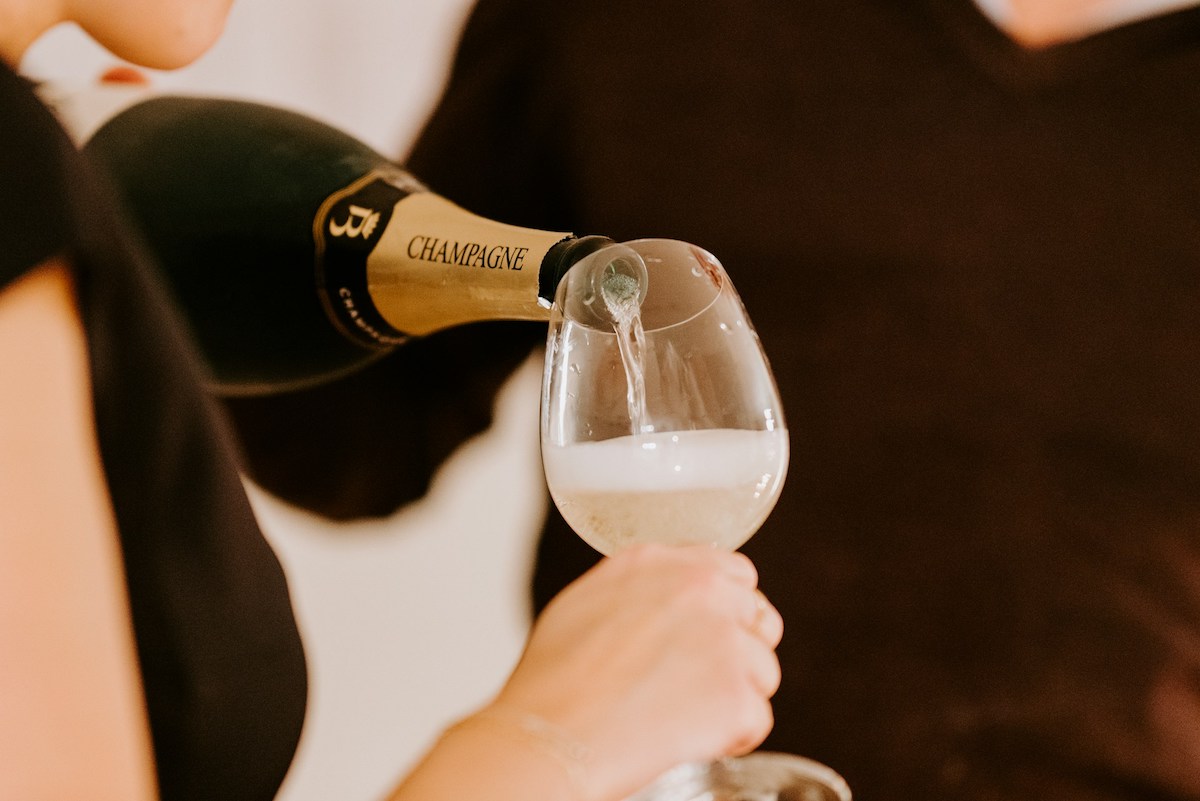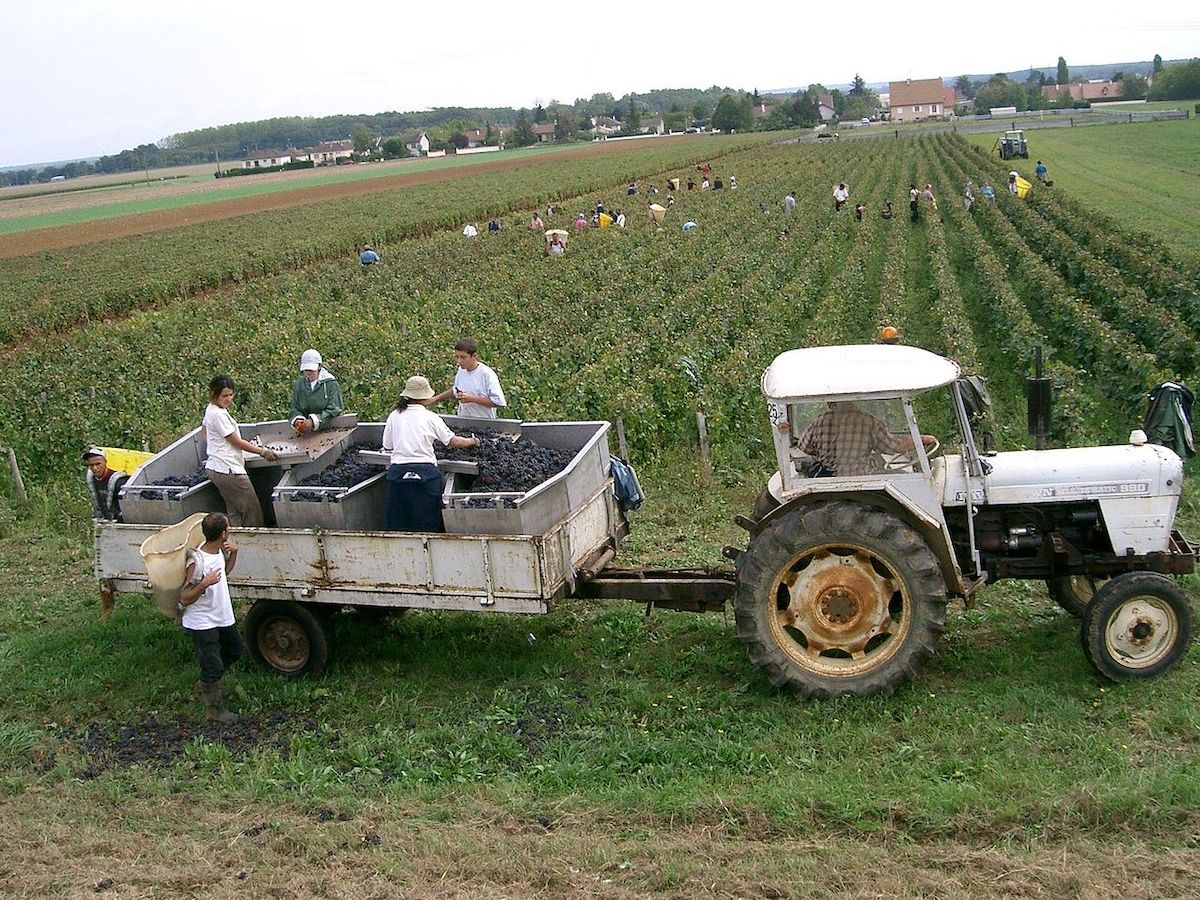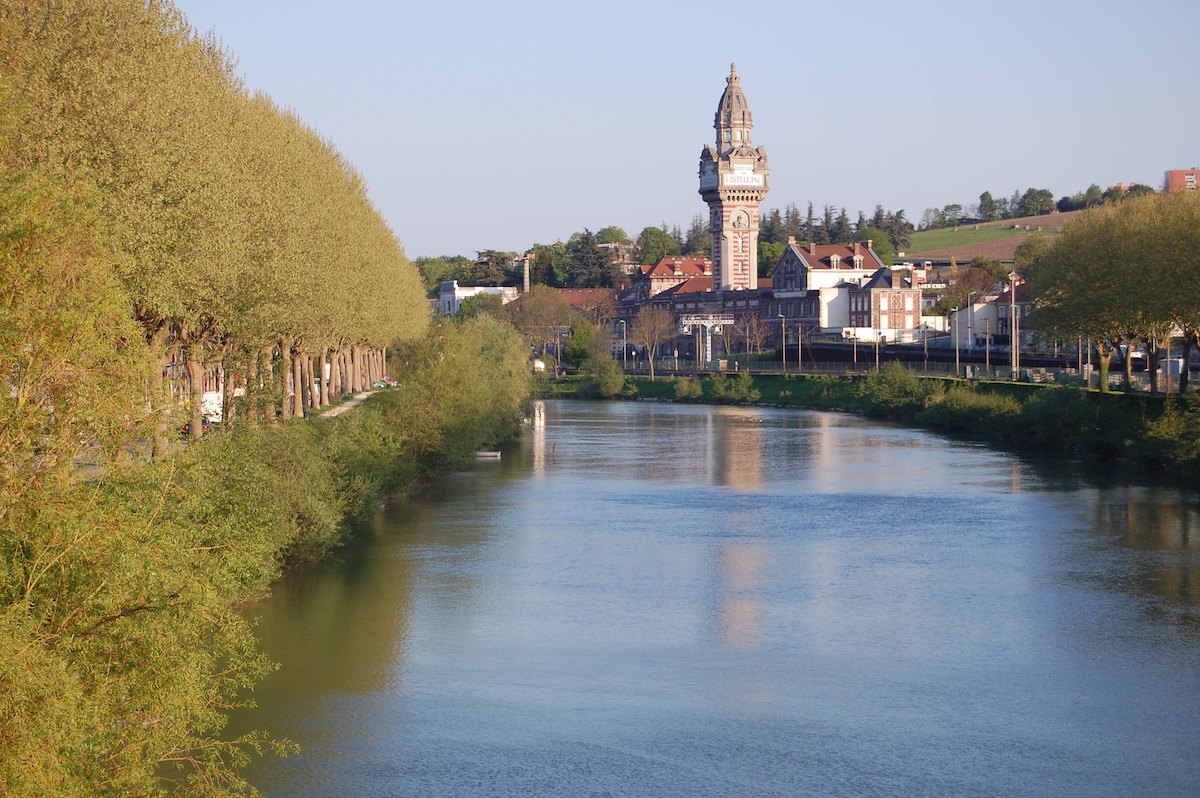After hearing about it all around the world, visiting Champagne is a must for any curious traveler. If you’re keen to visit this dynamic region to taste the best of French champagne, look no further than a trip to either Reims or Épernay.
Located in the north-east of France, the Champagne region is noted for its fields of vines and rolling hills. Whether you’re an oenophile or just longing to experience France beyond the glittering capital, Champagne can be an excellent way to combine multiple objectives.
Geographically close to Paris, visiting Champagne can be an easy day trip or a weekend getaway, depending on your priorities during your stay.
Let’s dive into why visiting Champagne should top your list for day trips, what to bring, and some champagne houses to whet your whistle and inspire you to plan your adventure through the vines.

Champagne must come from Champagne
Did you know that champagne, one of France’s proudest exports, is only considered champagne if it’s made in the region?
Champagne is an Appellation d’Origine Contrôlée (controlled designation of origin), meaning that there are specific regulations winemakers must follow in order to call their sparkling wine champagne. That’s correct, it’s only champagne if it comes from the region of Champagne, otherwise it’s just sparkling wine. There’s a big difference between champagne and other wines.
By protecting the name “champagne,” France values regional expertise and the vines themselves. The grapes must be grown in the Champagne region.
Why does champagne taste so good? Winemakers say the taste starts with the terroir. The terroir, or environmental factors like soil and climate, is unique to the region, combining sunny sloping hillsides and carefully curated vines that thrive with the climate.
If you’re planning a visit, opt for either Reims or Épernay to keep it simple. If you have some more time, feel free to explore smaller towns and other areas of the region.

Trains and buses make it easy to visit
Champagne is easily accessible from Paris by train, or even bus. SNCF, France’s rail service, offers multiple trains a day running between Paris Gare de l’Est and Reims, as well as Épernay.
The high speed train trip clocks in at a quick, 45-minute jaunt, though regional routes can take up to 1 hour 30 minutes. Budget travelers can also find bus tickets for less through providers like Flixbus. If you just do a day trip, make sure to check some of the best things to do in Paris at night to make the most of your return to the capital.
If flexibility is your jam, renting a car, or hiring a driver, may be the way to go. While there are tasting houses nestled close together in both Reims and Épernay, many smaller vignerons will be more spread out and would require transportation.

Don’t forget to bring a jacket and comfy clothes
If you’re heading out to the Champagne region for the weekend, you’ll likely have your suitcase in tow. Whether you’re going for the weekend or just a day trip, you might want to remember to toss a jacket in your bag. This is because, regardless of the season, champagne cellars tend to run a bit chilly. It’s wise to think ahead before you’re focusing more on your body temp than the winemaking process.
Flat, comfortable shoes are a must for descending into the caves, as well as helping you stay balanced after your third or fourth tasting. Bring along some water to stay hydrated, along with a snack to keep you going in between tastings.
While stopping for lunch is a must, champagne on an empty stomach will go straight to your head. If you’re driving, don’t forget to treat your designated driver to lunch, and consider buying them a bottle of champagne for later, as a thank you for facilitating your visit to Champagne.

The best season to visit Champagne is now
Some people say spring in Paris is perfect. Yet, visiting Champagne is a treat at any time of year, avoiding the harvest, or vendange, period is wise if you’d like to explore smaller wineries rather than the heavy hitter names you know from global exports.
An exception to the rule is if you’re interested in participating. If you’ve ever dreamed of working with a vineyard, finding opportunities to help with the harvest can give you a taste of the real labor that goes into your glass of champagne.
Check out sites like WWOOF, where you can match with farms and vineyards to trade room and board for helping out.

The history of sparkling wine and its star-like taste
You’d be surprised to know that champagne wasn’t always considered a high-end thrill. Champagne was actually a happy accident due to the inability of early winemakers to store wine in barrels during the cold winter months.
Bottling the wine a bit too soon, the effervescence we love in a cold, crisp champagne remained, which was originally considered a flaw in the process.
As the legend goes, Benedictine monk Dom Pérignon eventually decided to try the “ruined” wine. Astonished by the taste, he famously cried out “Come quickly! I am tasting the stars!” and the rest is history.

The places you can’t miss when visiting Champagne
The real question remains: once you’ve made it out there, where do you go?!
There are several options depending on whether you’d like to visit Reims or Épernay. Visitors with a car (and a designated driver) will have more options, as they can easily skip between the two towns or explore lesser-known vineyards a bit further out of town.
With day-trippers in mind, we’ve selected a few champagne houses in Reims and Épernay to get you started—whether you prefer learning more about the champagnes you already know and love, or you’d rather explore something new.

Ruinart
Located in Reims, Ruinart is an excellent option to learn more about this exceptional brand. Their chalk caves are counted among France’s UNESCO Heritage sites.
Explore this long-standing heritage and enjoy a tasting!
If you’re interested in spending more time here, Ruinart offers weekend champagne brunches.

Veuve Clicquot
Veuve Clicquot, named for the Widow Clicquot, who was its founder, is a brand with character.
The winery offers several kinds of visits combining the cave, the grounds, different kinds of tastings, or even a stronger focus on the history of its illustrious founder.
There is even a 2023 movie and many books inspired in the history of this winery and Madame Clicquot, so you’re in for a fascinating story.

Henri Giraud
Henri Giraud, a smaller purveyor located in Épernay, is an excellent choice if you’re looking to explore a lesser known vineyard.
They also offer a B&B, making this a strong contender if you’re looking to stay the night in the region.

Charles Mignon
Charles Mignon, another of Épernay’s champagne houses, is a small independent producer with character.
This family-owned and operated vineyard offers tours of their caves, explaining the process and a tasting of your choice.





